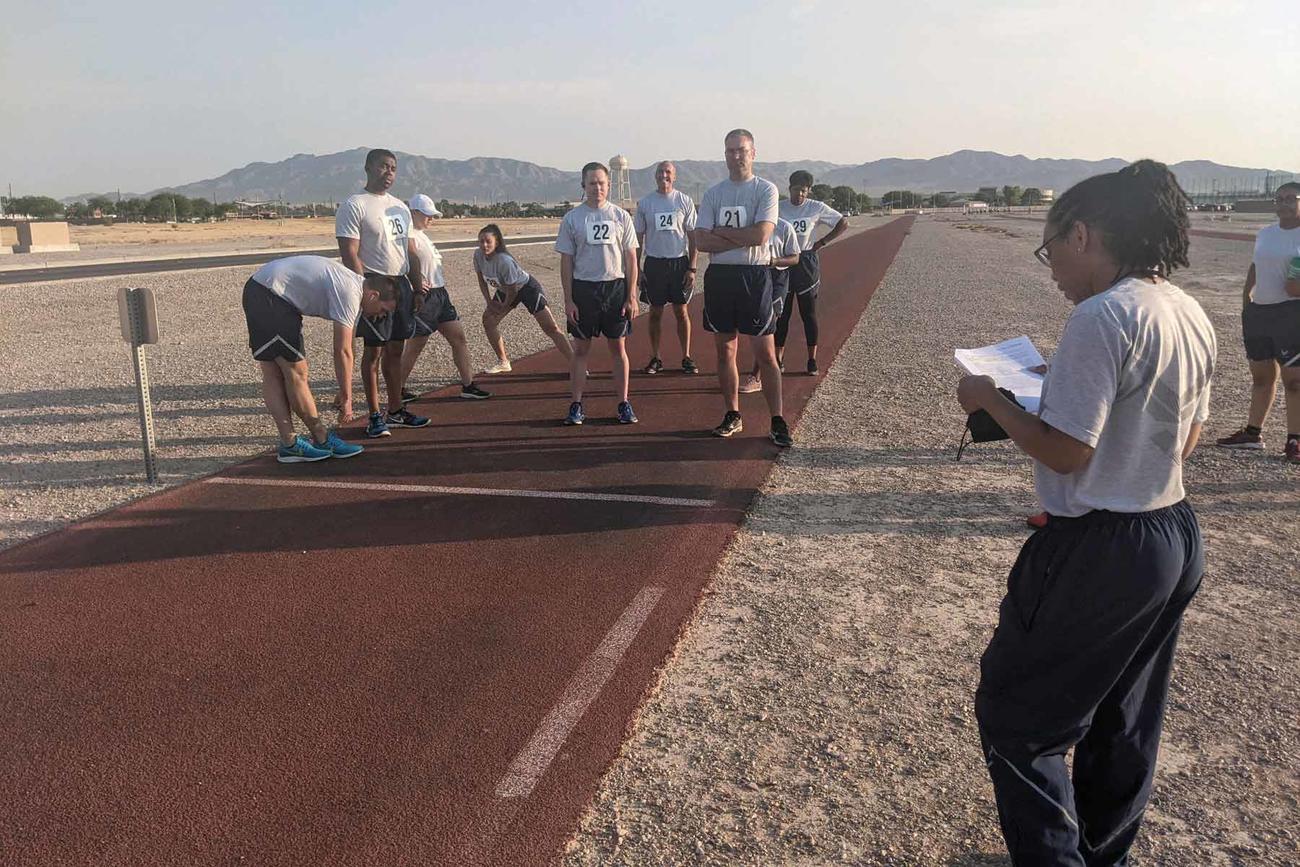

Airmen will have a broad menu of options, ranking from planks to sprints and even walking, on a new physical fitness assessment debuting in coming months.
During a Facebook Live chat earlier this week, Lt. Gen. Brian Kelly, the deputy chief of staff for manpower, personnel and services and Chief Master Sergeant of the Air Force JoAnne Bass outlined the options as part of the PT “evolution” to measure fitness.
The event alternatives aim to further the service’s goal of moving away from a one-size-fits-all model, which officials have said limits airmen on achieving their best possible score. So far, the service has named four new options: a shuttle run, walking, planks and hand-release push-ups. Officials have not said how these new events will be scored, or what rules will govern troops’ ability to choose between difference events.
Airmen will choose their events to fit the three required categories the service already uses: the single aerobic event, and two strength events.
Read Next: Switzerland Becomes Latest Nation to Choose F-35 for Its Next Fighter Jet
“There will be an option to walk. Today, you’d only walk if you get a medical [waiver], but you’ll have an option to walk as well,” Kelly said during the chat.
The push-up component of the existing test may also be amended to feature a hand-release option, similar to what the Army adopted for its new combat fitness test. For abdominal strength, an airman can choose planking instead of the traditional sit-ups, Kelly said.
The service’s existing but slightly tweaked PT test resumes tomorrow for airmen and Space Force guardians, and will not have the new options yet.
The current fitness test is gender- and age-normed. Airmen complete a timed 1.5-mile run, and try to do as many push-ups and sit-ups as possible in one-minute events.
In May, officials said they will start using a new scoring system July 1.
The Air Force has increased the maximum score for the sit-up and push-up events from 10 points to 20 points each after it stopped counting the results of the waist measurement, or tape test. The best possible score for the 1.5-mile run remains 60 points, meaning an airman could achieve 100 points on the test overall.
Scoring benchmarks remain the same: An “excellent” composite score is 90 points or higher, with all minimum components met. A satisfactory score is between 75 and 89.99 points. Anything below 75 is a failing score.
The service also created smaller age brackets for both men and women, according to the new scoring sheet. Previously, age groups spanned 10 years: under 30; 30 to 39; and so on. Now, age groups will be broken into five-year increments: under 25; 25 to 29; 30 to 34; and so on.
The new even options likely won’t be available at bases until Jan. 2022, Kelly said.
The test will remain 100 points maximum, with 60 points for the aerobic portion, and 20 for each strength category, he said.
“When we release this and introduce the other components, we’re going to have about a six-month break-in period, so people can test them out, can see, get feedback, but they won’t be able to count those,” he said. “We’ll learn something. And if we have to make any adjustments, we’ll make those adjustments.”
He added, “And then when you get ready to test, you choose.”
The service is still determining what it can do in place of the tape test to assess body fat.
Kelly said it’s possible the tape test will resume on Oct. 1 if officials don’t decide on an alternative option.
Last year, the service said it would not administer the tape test in order to adhere to social distancing protocols amid the pandemic. The test has long been unpopular among airmen, regarded by many as too subjective.
Months later, the Air Force decided not to bring back the tape test in favor of a new body composition measurement that has yet to be revealed. However, the service backtracked on axing the tape test altogether because of a mandatory requirement outlined in a Department of Defense instruction document.
Instead, the tape test will be used to determine whether an airman is in compliance with body composition standards, but the result won’t be counted in the overall PT score.
“It’s the law,” Kelly said. “DoD requires us to do that.”
The tape test may be removed from the overall PT test, and measured at a later date from an airman’s PT assessment, he said.
— Oriana Pawlyk can be reached at [email protected]. Follow her on Twitter at @oriana0214.
Related: The Air Force’s New PT Test Is Coming This July. Here’s What We Know
© Copyright 2021 Military.com. All rights reserved. This material may not be published, broadcast, rewritten or redistributed.
